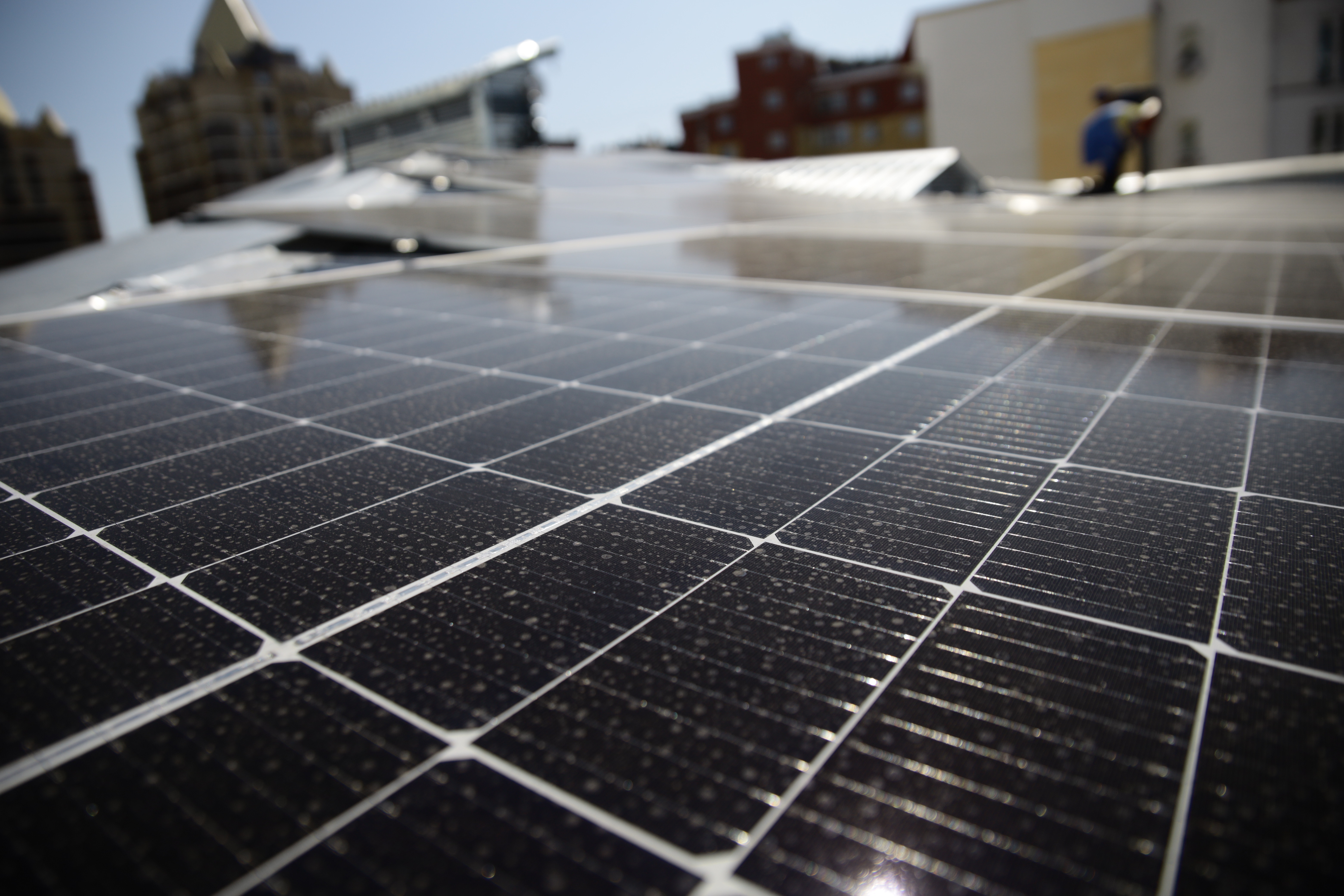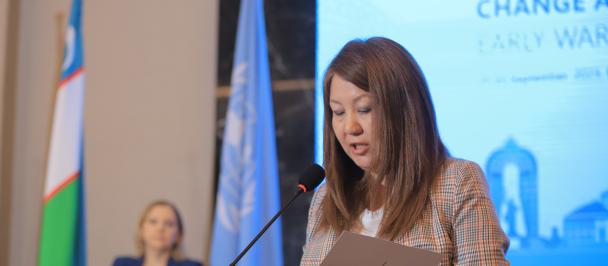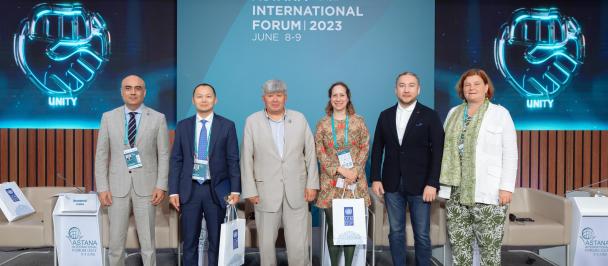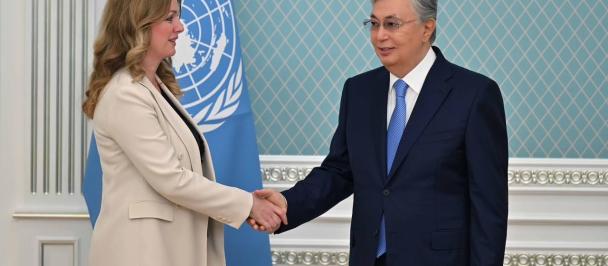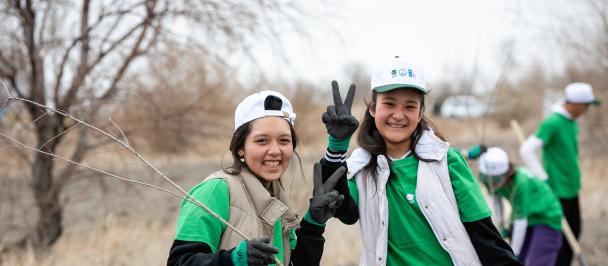Today, the energy industry is the source of about 73 percent of greenhouse-gas emissions and holds the key to averting the worst effects of climate change. The greatest challenge of our time globally is the transition from fossil fuels to clean energy. It is also critical to achieving the 2030 Agenda for sustainable development and net-zero by 2050.
In December 2020, during the Climate Ambition Summit, the President of Kazakhstan, Kassym-Jomart Tokayev, announced the ambitious target of carbon neutrality by 2060. Today Kazakhstan has begun to take steps to achieve that goal. The United Nations Development Programme (UNDP) in Kazakhstan actively supports key green initiatives in the country, including support provided for the development and adoption of a new Environmental Code, preparation of the national project Zhassyl Kazakstan (Green Kazakhstan), updating the Concept for the transition to a green economy, as well as support for the implementation of international climate commitments under the Paris Agreement.
Currently, Kazakhstan is developing its 2060 Long-Term Low-Carbon Development Strategy. The key milestones include: abandonment of new coal-fired generation projects and phasing out of coal combustion (2021-2025); a programme to plant two billion trees (2025); the doubling of renewable energy sources in electricity generation (2030); 100 percent sorting of municipal solid waste (2040); sustainable agriculture across 75 percent of arable land (2045); 100 percent electrification of personal passenger transport (2045); the use of green hydrogen; and the complete phase-out of coal-fired production (2050), etc.
Energy transition and transformation of the energy sector is key to achieving the strategic objectives. Reform of fiscal policy and cut-off subsidies for traditional energy are necessary in incentivising such transition. In support of the country's efforts, UNDP, together with the UN Environment Programme, under the PAGE programme, conducted a fiscal policy analysis in the energy, housing and utilities sectors. The initial analysis revealed the amount of direct and indirect subsidies to the energy, housing and communal services sectors. In 2019, these subsidies reached 3.3 trillion tenge in the form of secondary transfers. Around 60 percent of this amount was accounted for in subsidies for the consumption of oil; and 26 percent was accounted for in subsidies for the consumption of coal. The current focus of UNDP in this field is to identify existing schemes for subsidizing the electricity and heat-energy market in order to improve the system of economic incentives for the environmentally friendly and efficient development of renewable energy in the Republic of Kazakhstan.
The Next stage of joint working will provide modelling based recommendations on possible redistribution of identified subsidies-fiscal space - for developing sustainable economy sectors (development of renewable energy sources, education, etc.), incorporating targeted assistance to socially vulnerable groups and assessment of social, economic and environmental impacts of the proposed changes. Thus, ‘negative’ subsidies can be translated into public investments in ‘clean’ energy and a sustainable economy.
To leverage private investments in renewable energy sources UNDP has developed and demonstrated economic instruments to support green projects.
For several years UNDP has been practicing subsidies for interest rates on projects with high potential to reduce energy consumption in urban infrastructure. For example, in 2020, UNDP launched financial instruments to stimulate the development of small-scale renewable energy projects. The proposed scheme reduced the projects’ reliance on bank loans and increased the competitiveness of small renewable energy sources in comparison with traditional energy. Clearly defined and transparent conditions for obtaining financial support and a fixed amount of subsidies ensured that there was lower risk of project indicators being distorted. Thus, small and medium-sized businesses were able to access maximum financial support.
In 2020, the Damu Entrepreneurship Development Fund JSC, with the support of UNDP, successfully debuted green bonds at the Astana International Exchange. The issuance of green bonds resulted in a number of changes. First, it allowed Damu to consolidate the green-bond policy, which was approved by the Government. Second, a system for accounting for CO2 reductions from supported renewable energy projects was introduced. Third, Damu created targeted green credit lines in commercial banks for small renewable energy projects. Last, it attracted the attention of private investors in green projects through mechanisms for securitization, etc.
Learning from experience in development and testing financial instruments to support small and medium-sized businesses and the implementation of low-carbon investment projects in urban infrastructure, UNDP partners scaled up similar loan-subsidy approach to accelerate gasification in other cities and regions of the country.
The recent IRENA research sets out that the value of decarbonizing the global economy by 2050 would be eight times the cost, taking health and education benefits into account. As governments determine how to invest, they have a choice to make: stimulate fossil-fuel industries and other remnants of the way things were; or invest in an inclusive green economy.

 Locations
Locations